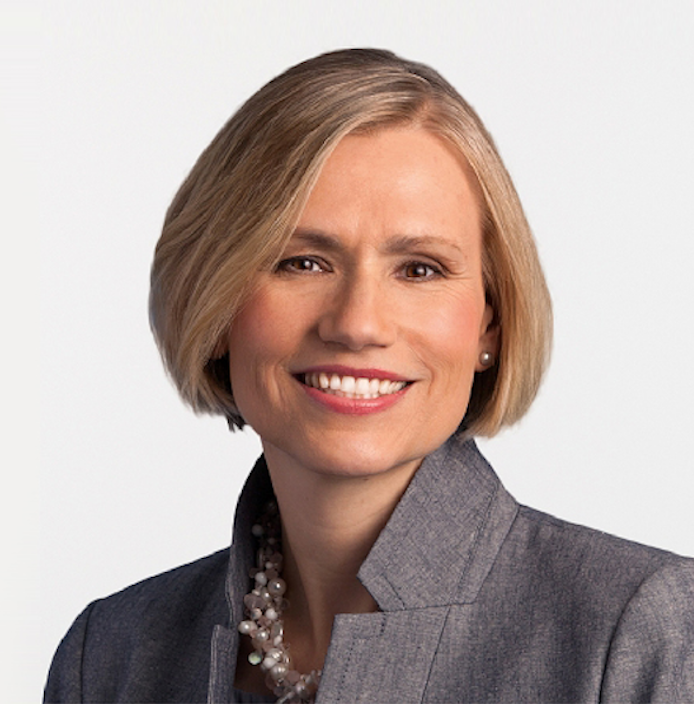by Kristina Hooper, Global Market Strategist, Invesco Ltd., Invesco Canada
A collective sigh of relief was expelled on Friday evening as U.S. President Donald Trump announced he would indefinitely suspend the planned imposition of tariffs on Mexico – which was set to go into effect on June 10. Markets have entered “risk on” mode, given that the crisis was averted. However, we need to recognize that the announcement that the U.S. would apply a tariff on Mexican goods as a way to address immigration was a “game changer.” I believe strongly that just the threat of using tariffs to achieve non-trade policy objectives is very concerning and will likely contribute to a significant escalation in economic policy uncertainty – even though the current situation has been resolved.
U.S.-China trade dispute has continued to worsen
And although the Mexico tariff situation has been resolved, the U.S.-China trade dispute has not. In fact, it has only worsened in the last week. China issued a travel warning to the United States, saying that U.S. law enforcement agencies are harassing Chinese travelers. China also warned its citizens about the dangers of traveling to the U.S., citing frequent shootings, robberies and theft. China made it clear that it does not plan on backing down, instead suggesting that China will have to adopt the necessary countermeasures if the United States decides to unilaterally escalate tensions.
The reality is that the rise in protectionism is cause for concern. It was certainly a major area of concern at the G-20 Finance Ministers’ meeting June 8 and 9 – and with good reasons. The World Bank lowered its global growth forecast for 2019 from 2.9% to 2.6%. What’s more, it cut its forecast for growth in trade from 3.6% to 2.6%.1 World Bank President David Malpass articulated his concerns, “There’s been a tumble in business confidence, a deepening slowdown in global trade, and sluggish investment in emerging and developing economies. This is worrisome because subdued investment weakens the foundations for sustained growth.”2 Christine Lagarde, head of the International Monetary Fund, echoed that sentiment. She warned that the rising tariffs between the U.S. and China were “self-inflicted wounds” that would hurt an already weakening global economy.3
A silver lining: Central banks are leaning toward accommodation
The silver lining is that, amidst many signs of a global economic slowdown and given the escalating trade war, central banks have begun tilting toward more accommodation:
- S. Federal Reserve Chairman Jerome Powell now appears to be open to a rate cut in the face of a deteriorating trade situation. Recall that just a month ago, Powell downplayed the possibility of a rate cut this summer. But by last week, he seemed to have changed his perspective, “We do not know how or when these trade issues will be resolved. We are closely monitoring the implications of these developments for the U.S. economic outlook and, as always, we will act as appropriate to sustain the expansion …”4 Powell didn’t explicitly say a rate cut was needed, but the implication was there – certainly that’s what investors read into his comments. Fed Vice Chair Richard Clarida also seemed to suggest last week that he too would be open to accommodation in the face of tariffs negatively impacting growth. St. Louis Fed chief James Bullard was more explicit in his speech last week, saying that a rate cut may be warranted soon.
- Last week European Central Bank (ECB) President Mario Draghi opened the door to interest-rate cuts for the eurozone economy. Recall that last year the ECB had been moving in the opposite direction, attempting to slowly normalize by ending quantitative easing at the end of 2018. In its formal statement, the ECB pledged to push out the timeline of its first expected rate increase from the end of 2019 to the middle of 2020. In addition, it announced a new package of long-term loans for banks. But in a question-and-answer session, Draghi went one step further and indicated he was open to the possibility of rate cuts.
- People’s Bank of China Governor Yi Gang is clearly focused on providing more accommodation to the Chinese economy. In a recent interview with Bloomberg, he articulated that he has “tremendous” policy tools available to stimulate the economy.5
- Bank of Japan Governor Haruhiko Kuroda, in a recent interview with Bloomberg, suggested that the BOJ is likely to ease further if momentum toward its 2% inflation target is lost.6
- Other central banks have been cutting their key lending rates recently, including India, Australia, New Zealand, Malaysia, and the Philippines.
Even a lackluster U.S. jobs report on June 7 was viewed as a positive by markets, given that it gives the Fed more reasons – or at least does not make it more difficult – for the Fed to raise rates. And so, as we have seen in recent years, bad news can be good because of central banks. In fact, the finance ministers and central bank chiefs of the G-20 ended their weekend of meetings by pledging to “use all policy tools to achieve strong, sustainable, balanced and inclusive growth” in the face of downside risks such as tariffs.7 That suggests that the environment is likely to continue to be supportive of risk assets despite a slowing global economy and trade friction. And that is the central bank version of a silver lining.
Looking ahead: Issues to watch
Below, I highlight some important developments to follow:
- The race to replace the UK prime minister officially kicks off this week. While Boris Johnson is the frontrunner, my expectation is that he will have a more difficult time than expected in getting the nod from the Conservative Party. The lawsuit against him for alleged misrepresentations during the Brexit campaign could prove an obstacle. I expect more surprises in this contest. Just last week, Michael Gove was forced to admit to using cocaine 20 years ago, hurting his chances to replace Theresa May. My suspicion is that the Tories may ultimately choose a less extreme candidate than Boris Johnson, but anything is possible in the post-Brexit referendum UK. In the meantime, I expect downward pressure on the pound to continue as uncertainty continues.
- We will get a slew of data releases on the Chinese economy this week, which should give us some clues as to whether the economy really is getting a policy boost – especially after some recent data suggesting weakness. In particular, monthly activity data is due June 14, with improvements expected in industrial production and retail sales. I fully expect an improvement in Chinese economic data in general, given the significant stimulus we have seen coming from China.
- I expect that there will be continued acrimony in the U.S.-China trade relationship and that it will continue to extend into foreign policy – and that acrimony could escalate in coming days. That is especially so given the ultimatum Trump gave to Chinese President Xi Jinping on June 10: Come to the G-20 meeting at the end of June and negotiate with him – or the U.S. will levy more tariffs on Chinese goods. I also expect to finally see the U.S. Congress attempt to claw back trade powers it has given away to the executive branch over the last hundred years. That’s because many Republicans and business groups were very rattled by the tariff threat against Mexico last week and do not want a repeat of that scenario.
This post was originally published at Invesco Canada Blog
Copyright © Invesco Canada Blog














